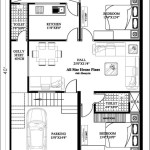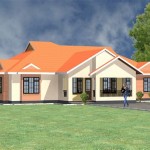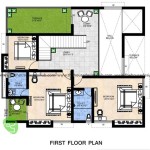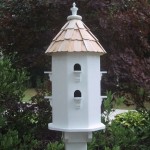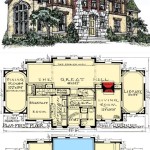Airplane Hangar House Plans: Essential Considerations
Are you an aviation enthusiast dreaming of a home that seamlessly integrates your passion for flying with daily living? Airplane hangar house plans offer the ultimate solution, combining a spacious hangar for your aircraft with a comfortable and stylish living space. However, designing and building such a unique structure requires careful planning and attention to essential aspects. This article will guide you through the key considerations for creating exceptional airplane hangar house plans.
1. Determine Hangar Specifications
The foundation of your airplane hangar house plan lies in determining the specifications of the hangar itself. Consider the type and size of aircraft you plan to accommodate, as well as its wingspan, overall height, and other relevant dimensions. Additionally, factor in sufficient clearance for taxiing, maneuvering, and maintenance operations within the hangar.
2. Consider Living Space Design
Beyond the hangar, the living space is equally important. Define the number of bedrooms, bathrooms, and other desired amenities. Consider the flow of space and natural light to create a comfortable and inviting living environment. The integration of large windows or skylights can enhance the ambiance while providing panoramic views of your aircraft.
3. Optimize Access and Convenience
Seamless access between the hangar and living space is crucial. Plan for a dedicated entrance from the hangar into the living area, ensuring convenient transitions for daily use. Additionally, provide direct access to outdoor spaces, such as a patio or deck, for relaxation or entertaining.
4. Integrate Security Measures
As with any home, security is paramount. Incorporate measures such as security cameras, motion sensors, and access control systems to protect your valuable aircraft and belongings. Consider installing a fence or perimeter wall around the property for added peace of mind.
5. Ensure Proper Ventilation and Lighting
Hangars require adequate ventilation to maintain air quality and prevent moisture buildup. Design your hangar with exhaust fans and ventilation systems to ensure proper airflow. Additionally, ample lighting is essential for both the hangar and living space. Natural light can be maximized through windows and skylights, while artificial lighting should be carefully planned to create a well-lit environment.
6. Address Noise Considerations
Aircraft engines can generate significant noise. Mitigate this by using soundproofing materials in the hangar and living space. Consider installing noise-canceling windows and insulation to minimize noise levels and enhance comfort.
7. Consult with Professionals
Designing and building an airplane hangar house is a complex undertaking. Engage the services of qualified architects, engineers, and contractors who specialize in such projects. Their expertise will ensure that your hangar house meets industry standards, safety regulations, and building codes.
In conclusion, creating exceptional airplane hangar house plans requires careful consideration of the hangar specifications, living space design, access and convenience, security measures, ventilation and lighting, noise considerations, and professional consultation. By addressing these essential aspects, you can bring your dream of a home that combines your passion for flying with the comforts of modern living to life.

Hanger Home Lower Level Might Need More Room For Toys Hangar Homes Airplane House Floor Plans

Susitna Hangar Home

Susitna Hangar Home

Custom Northwest Home With Airplane Hanger 35475gh Architectural Designs House Plans

7 Hangar Arch Ideas Airplane Hanger House Homes Floor Plans

Hangar Homes Floor Plans Metal Building House Design

Hangar Home Designer Residential Structural Architectural Engineer

Hangars And Homes Sa Flyer

Aviation Hangar Wbdg Whole Building Design Guide

Airport House Energy Efficiency And Garage Space For An Airplane Greenbuildingadvisor



